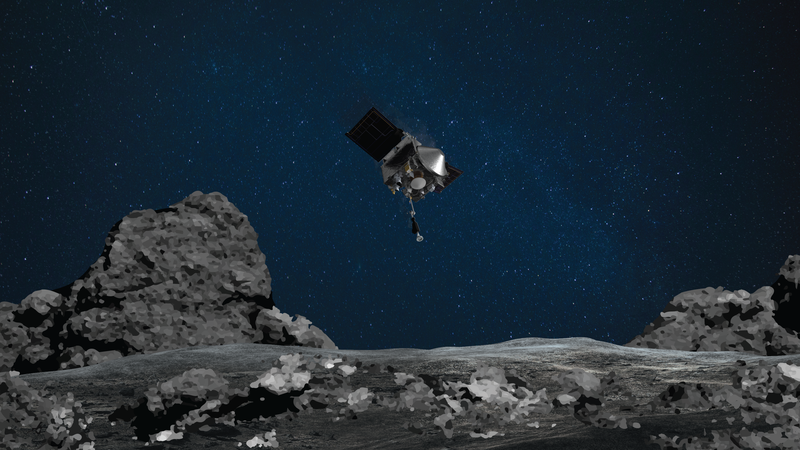NASA's Earth-Bound Asteroid Probe Successfully Performs First Course Correction Maneuver

An illustration of the OSIRIS-REx spacecraft touching down on asteroid Bennu.
NASA’s OSIRIS-REx spacecraft has a special package for Earth: rocky samples from one of the most ancient objects in the universe. The probe snagged a sample from asteroid Bennu in October 2020 and has been making its way for an Earth drop-off ever since. To keep it on track, NASA recently executed the spacecraft’s first course correction maneuver by altering its trajectory towards our planet.
The OSIRIS-REx mission is scheduled to deliver samples from asteroid Bennu on September 24, 2023. The plan is for the spacecraft to drop off its precious cargo during the scheduled flyby, after which time the capsule containing the asteroid samples will perform a parachute-assisted landing at the Air Force’s Utah Test and Training Range in the Great Salt Lake Desert.
Read more
Asus Made a Kitchen Gadget That Tells You When Fruits and Veggies Are Actually Clean
I Drank Dying Glacier Water, and All I Got Was a Deeper Feeling of Dread
OSIRIS-REx Delivers Asteroid Bennu Samples to Earth
For this to work, however, the spacecraft’s incoming trajectory must be precise. “If the capsule is angled too high, it will skip off the atmosphere,” Mike Moreau, OSIRIS-REx deputy project manager at NASA’s Goddard Space Flight Center, said in a statement. “Angled too low, it will burn up in Earth’s atmosphere.” To make sure the precious samples stay safe, NASA will conduct a series of maneuvers over the next year to bring the spacecraft closer to Earth at a precise speed and direction.
On September 21, the team behind the mission fired the spacecraft’s thrusters for 30 seconds, changing the spacecraft’s trajectory for the first time since it parted ways with Bennu on May 10, 2021, the space agency announced on Friday. The first maneuver will have OSIRIS-REx pass Earth at a distance of about 1,367 miles (2,200 kilometers), while the final correction next year will bring it to within 155 miles (250 kilometers) from the surface. At that distance, the spacecraft will be able to safely drop off the samples.
OSIRIS-REx launched on September 8, 2016. The mission is NASA’s first attempt to return surface materials from an asteroid such that it can be anazlyed in a lab. Its target Bennu is a near-Earth object that orbits the Sun every 436.6 days and is believed to have formed 4 billion years ago. By analyzing samples from Bennu, scientists can get a better idea of the type of materials that existed in the early solar system.
After OSIRIS-REx drops off the sample from Bennu to Earth, the spacecraft will go off on another adventure to rendezvous with another asteroid, Apophis.
More: Walking on Asteroid Bennu Would Be Like Stepping Into a Ball Pit, NASA Says

